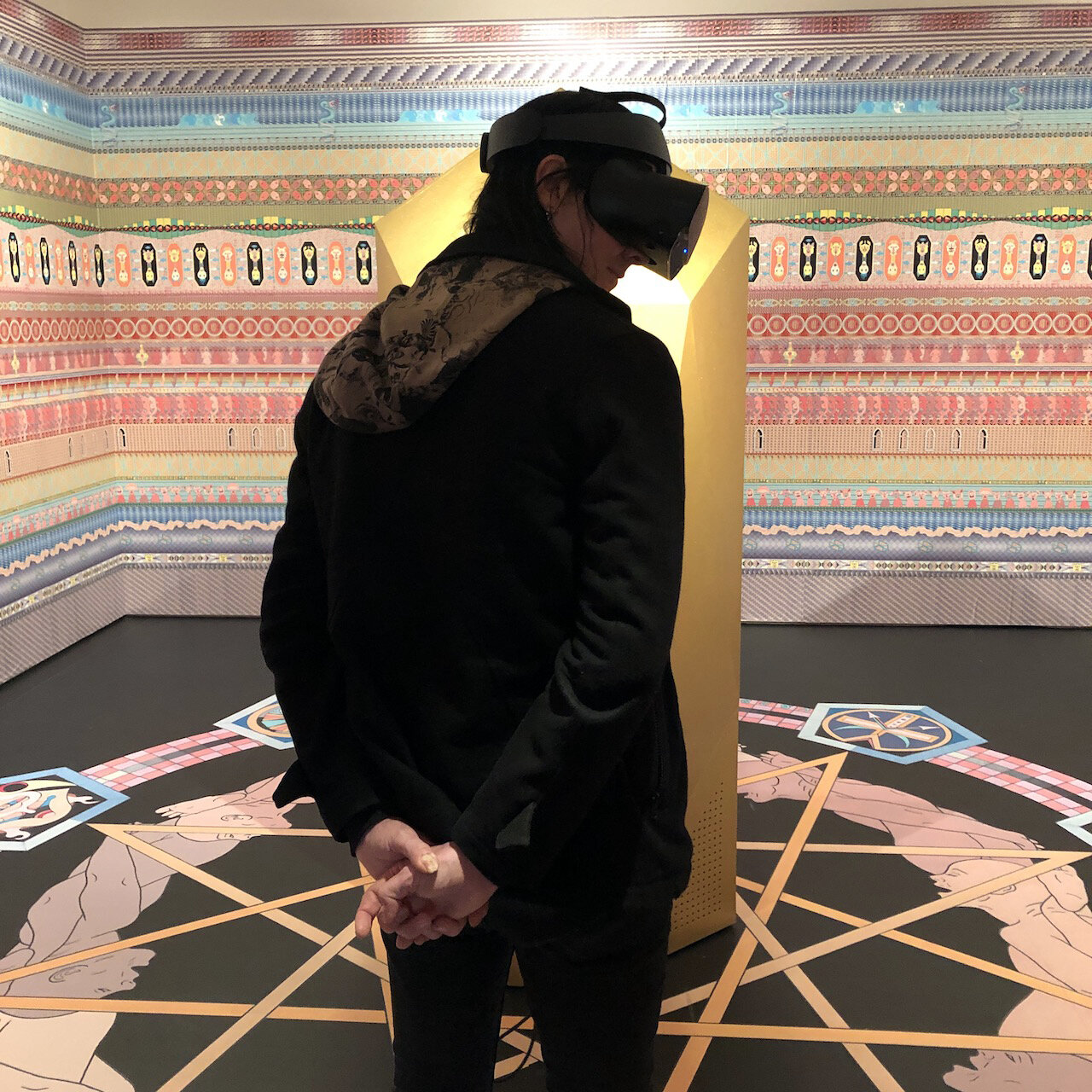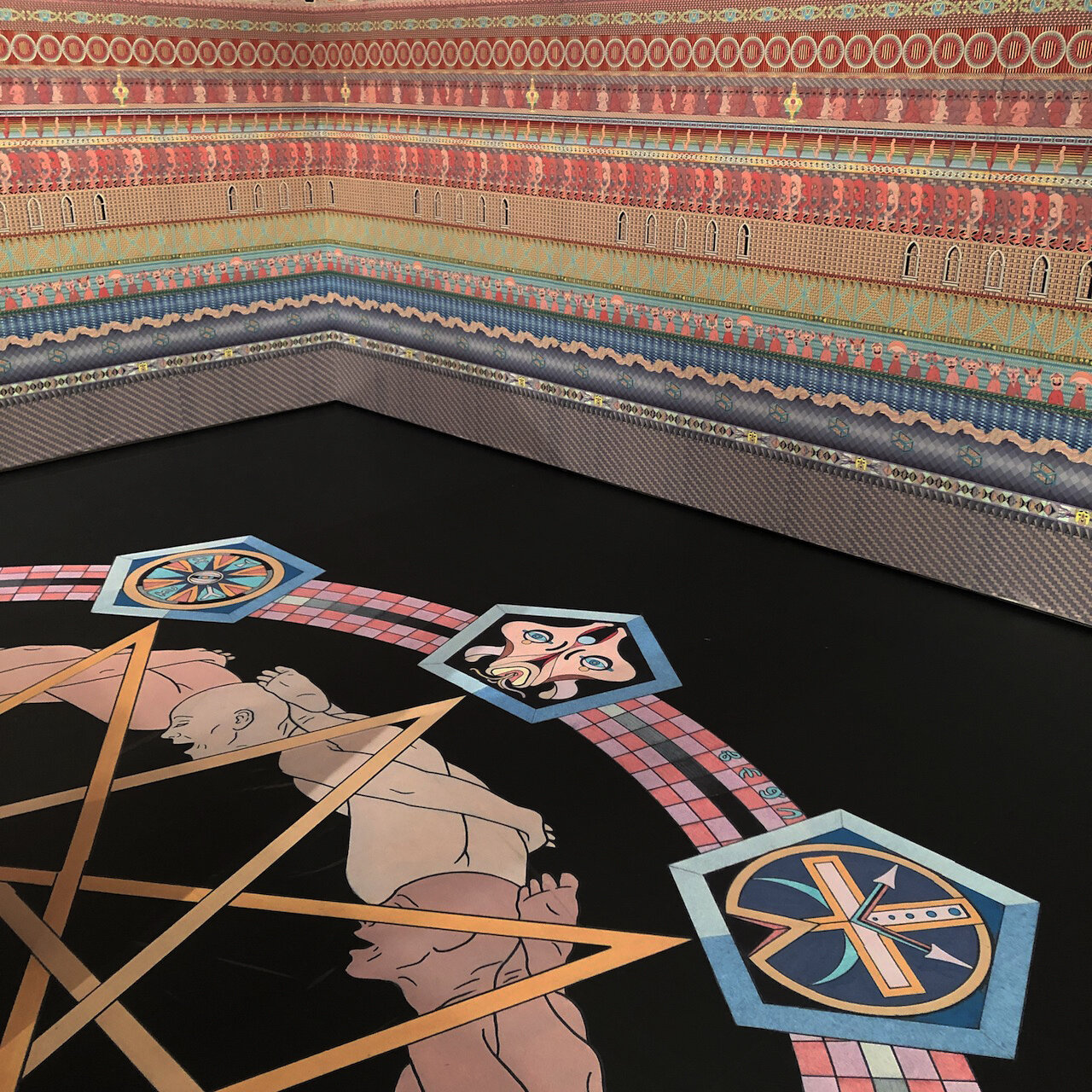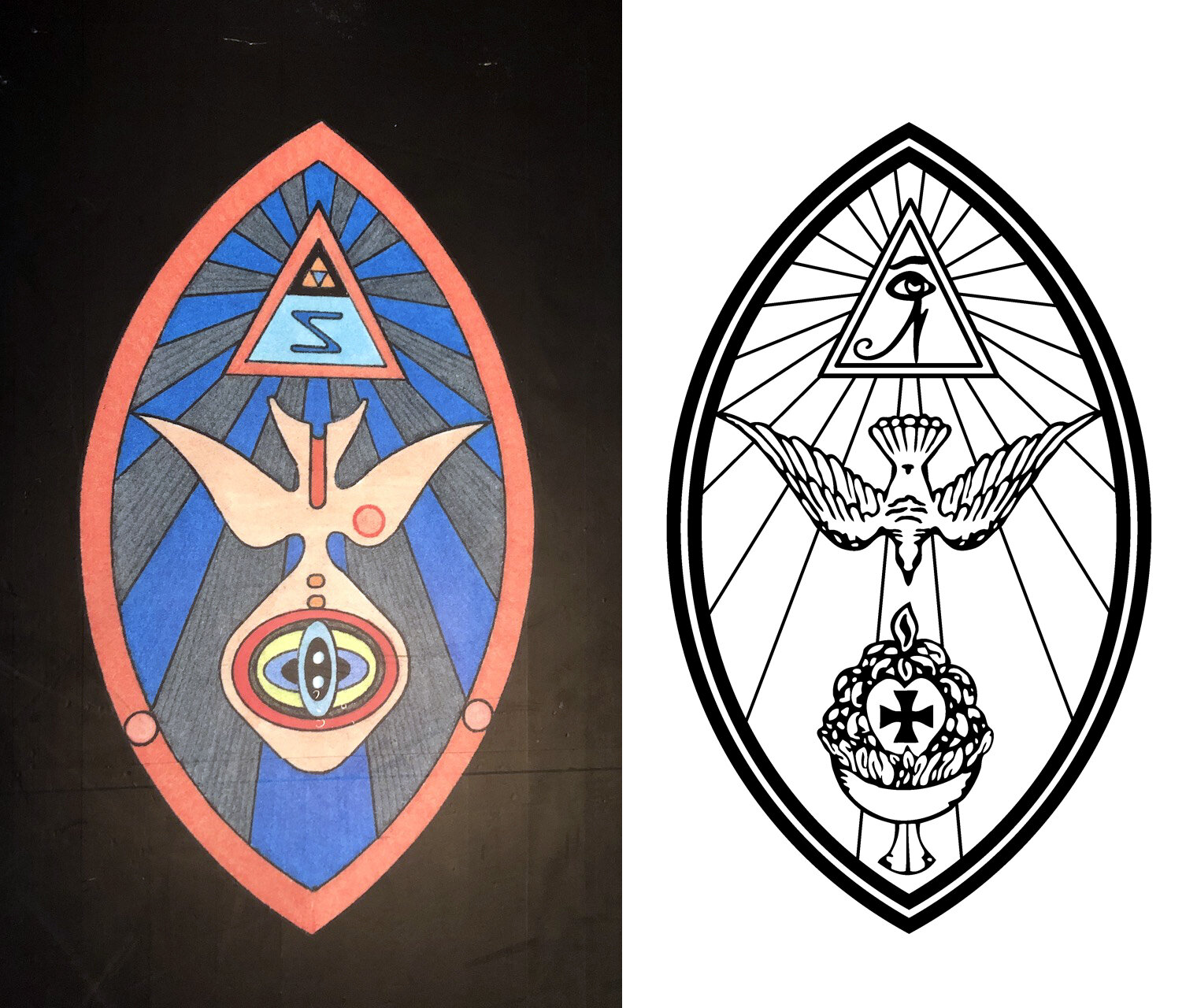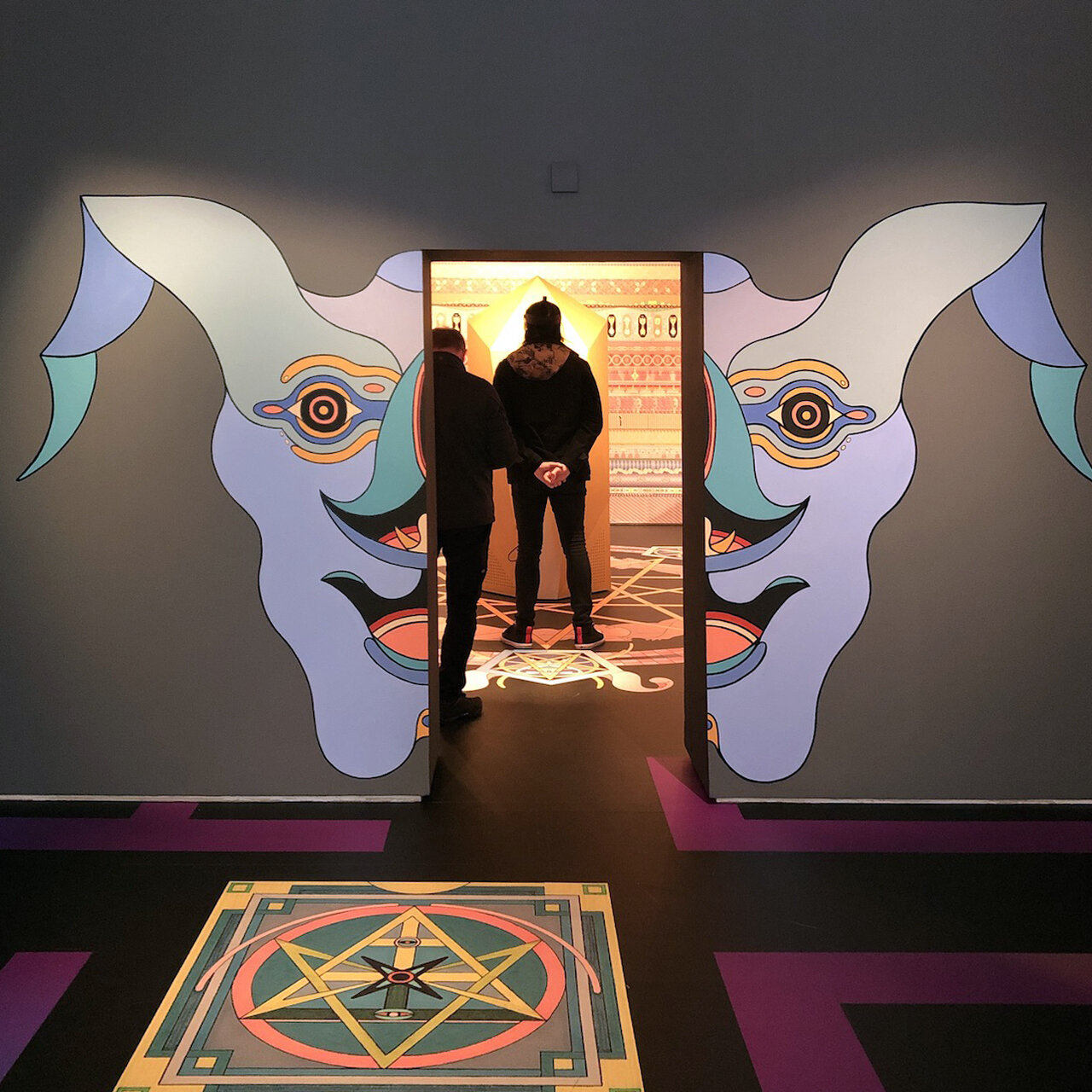Terminus - Jess Johnson and Simon Ward
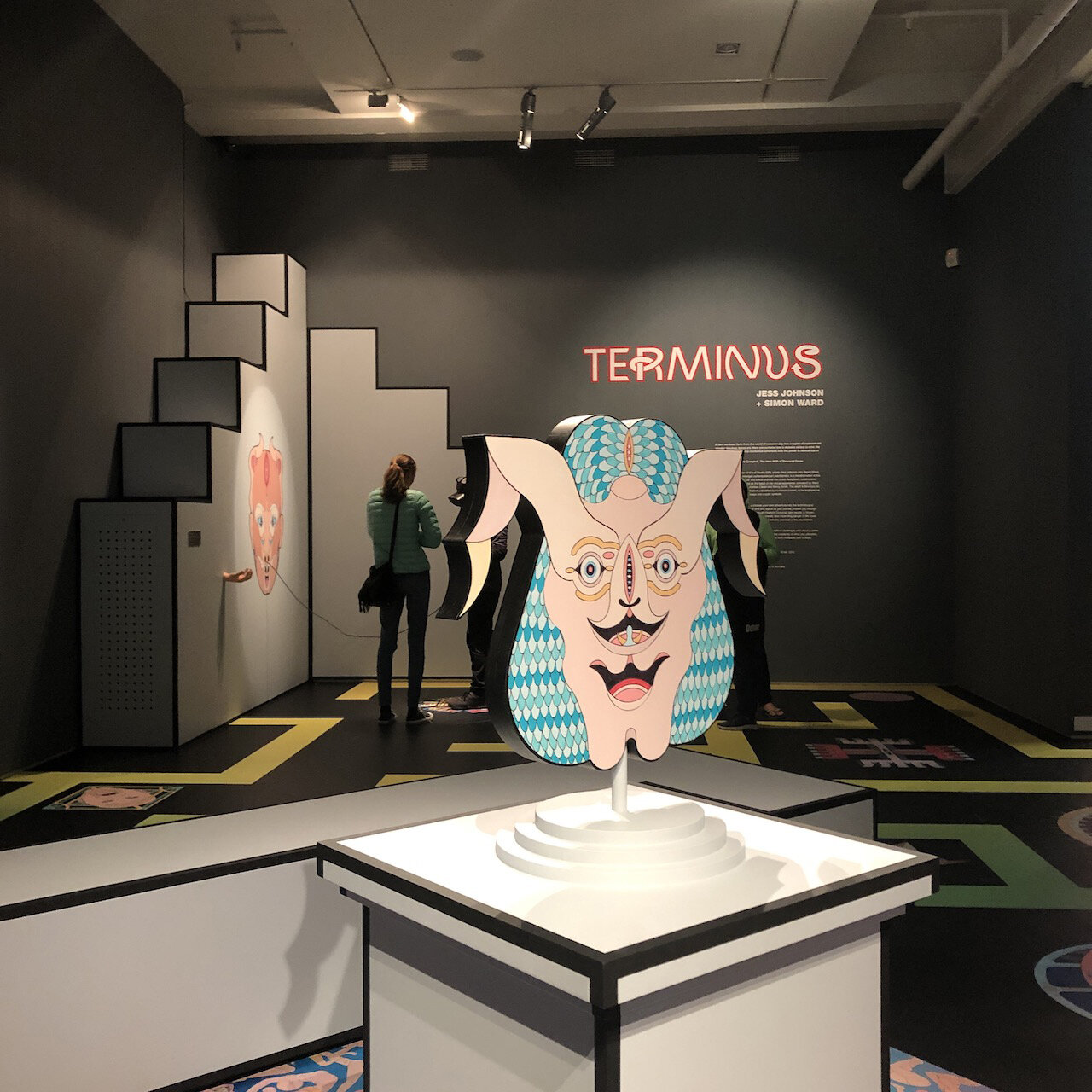
A VERY overdue post as I went to see this show at Tauranga Art Gallery this time last year! I was looking at some of the pictures from the show and thought I should really write a bit about it, if only to order my own thinking. Dan and I made a road trip down to Tauranga because I wanted to see the show and I'm very glad we did because it fulfilled many aspects I wanted to see in a VR-based exhibition.
The overall installation of the exhibition was excellent - it gave an immersive space for the VR experience to inhabit; going from the real world space into the virtual world was only a small step rather than a jarring switch from one to the other. Personally I have a love of geometric shapes and patterned surfaces with a bit of an esoteric bent, so Jess Johnson's style is inevitably going to appeal to me. I also find the unusual pastel colour palette intriguing as there is something soft and 'fleshy' about it despite the hard geometric edges. The whole show is fleshy without being overtly sexual, in fact the human figures appear quite sexless and devoid of biological process despite the many unusual orifices and appendages.
Having experienced VR previously I found these pieces to be far more successful and immersive than any I have seen. I loved being able to look up, down, behind me and get an even fuller engagement with the virtual world. I also appreciated the 'travelator' used in some of the works - it meant you could remain still on the spot while travelling inside the world. You would definitely fall over trying to walk with the headset on. Going up and down elevator platforms was particularly effective, it made me off balance in the real world which Dan thought was hilarious! Watching people wearing the headsets while wobbling around and reaching out to grab things that weren't there was excellent and served to get you wondering what you were going to see when it was your turn. The VR headsets are always going to be cumbersome and I don't see any way around that until the technology changes or improves. I feel the novelty of the experience allowed viewers to forget about the headsets, but once VR becomes more established its going to cause a problem for artist's wishing to use the medium as viewers become irritated and jaded by the tech.
Within the virtual worlds Jess Johnsons style is very effective. The hand drawn imagery means that the animation doesn't need to contend with being hyper-real or detailed in a real world sense. Flat blocks of colour and hard outlines are perfectly suited to the current restrictions imposed by the media, plus the otherworldly creatures and android-like figures don't need to move in a truly human way. A year later the part I remember most clearly is in one of the worlds (I think "Fleshold Crossing") where you approach and move between two gigantic crouching sphinx-like creatures who turn to look at you as you pass below. This is was my favourite part because you could feel the immensity of the creatures and the smallness of yourself. The environmental soundtracks created by Andrew Clarke serve to deepen the experience.
The Tauranga Art Gallery statement described the exhibition as "...a virtual realty quest; a choose-your-own adventure into the technological." On the contrary, I would describe the VR experiences as the complete opposite of a "choose-your-own adventure". Once you enter the world you cannot choose anything except where to look, so in that sense the artists are curating the entire experience and taking you on a journey of their own construction. I wonder if the next step would be to make some choices available within the worlds? Allowing the viewer to choose paths at the junctions of travelators? Or operate controls within the worlds?
The exhibition also had complementary 'real world' pieces by Jess Johnson such as quilted wall hangings and plinths with sculptural elements which added to the exhibition space feeling like a kind of temple. It's a bit like a cross between being inside a video game and a mesopotamian tomb! There was liberal use of repurposed occult and religious symbolism, which would have been vaguely familiar to many people, and starkly familiar to anyone with an interest in esoterica. Amongst the unicursal hexagrams and tantric yantras I spotted a few symbols that caused me to pause; one of them was the Druidic emblem and the other the OTO lamen. I'm curious whether when artists use occult symbols they see the traditions they belong to as being 'alive' or dead and gone? And how they feel about changing them to be something else, do they retain the meaning they carried, or do they then take on new meaning imbued by the artist? Or do they become decorative, or maybe vaguely esoteric to trigger some recognition in viewers? Or just serve to be cryptic? This is very interesting to me!
I must say I'm looking forward to what Jess Johnson and Simon Ward come up with next. It's great to see work from artists pushing the boundaries of new technology, especially because it can be so challenging to make it work due to the restrictions imposed by evolving mediums.



